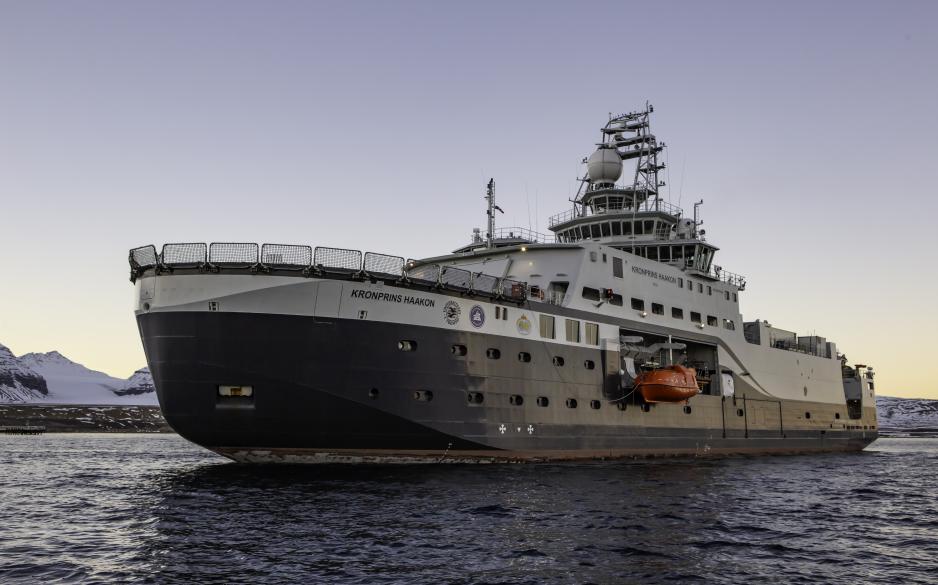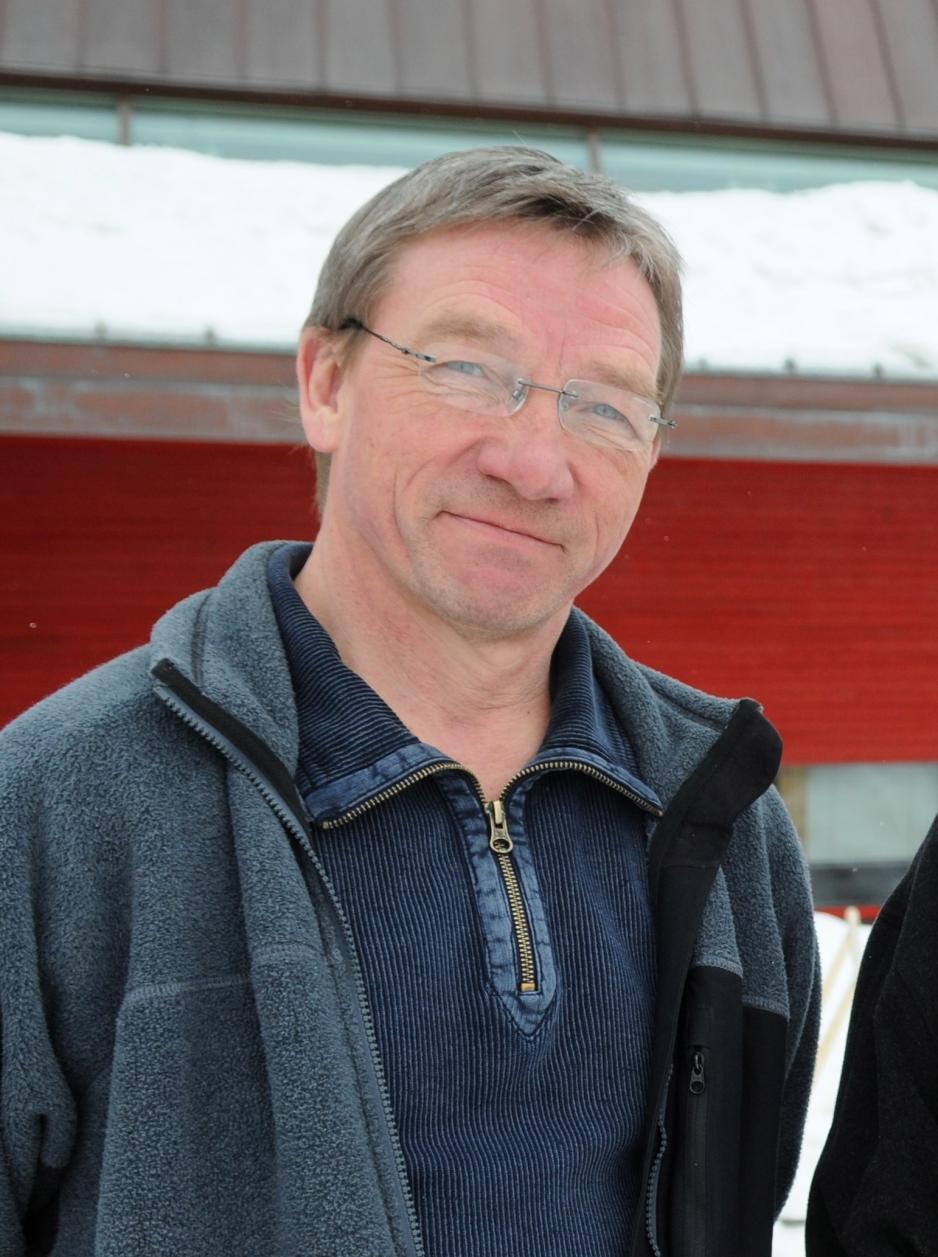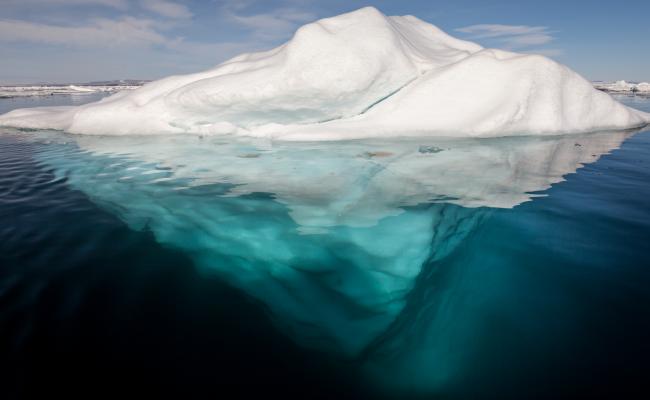The Polar Voyage GoNorth: The New Norwegian Continental Shelf Is Now Being Explored

The icebreaker RV Kronprins Haakon left Longyearbyen for the first GoNorth voyage on the 15th of October. (Photo: The Norwegian Polar Institute)
In the middle of October, the icebreaker «RV Kronprins Haakon» left the port in Longyearbyen, heading for the Nansen Basin north of Svalbard with 35 researchers from 13 institutions on board. Thus, the Norwegian polar sea program GoNorth has begun.
With Norway's first icebreaker as the base, the polar expedition GoNorth headed north from Svalbard on the 15th of October after years of planning. On board are 35 researchers, technicians, and students, all working to increase knowledge of Norway's northernmost waters.
The expedition follows the UN's Commission on the Limits of the Continental Shelf, which in 2009 supported Norway's demand for an extended shelf in the North. Ice and challenging conditions have made it difficult to collect data north of Svalbard, the new shelf is therefore currently unexplored and the knowledge on it is inadequate.
The expedition's mission is primarily to collect data for answering several questions, such as how the polar basin has opened up over the past 50 million years and how the Gulf Stream found its way into the Arctic Ocean.
"We are also concerned with the changes that are slowly and continuously taking place in and along the mid-ocean ridge west and north of Svalbard. Are there, for example, mineral deposits there?" says Gunnar Sand, Project Director at the Sintef research institute, which is the project manager for the expedition.
Climate change
GoNorth will also gather information about the climate and how it has changed throughout time. 50 million years back, for example, the temperature in the Arctic was completely different from now. On Svalbard, there are remnants of lush forests and the coal mines tell a story of a tropical climate, among other things.
"In the sediments on the seabed, we find the climate archive from all these years. GoNorth wants to provide the scientific field and the audience insight into this 'database', which will help us set today's climate changes in a historical perspective," explains Sand and calls the expedition 'quite exotic'.
Knowing how much ice there was in the Arctic during historical climate conditions will contribute to a better understanding of the future. Researchers from Norce will use old genetic material stored in sediments on the seabed to calculate scenarios, something that has never been done before.
Management responsibility accompanies the new continental shelf and the water column above, and GoNorth will, among other things, study ocean currents and biological processes in the Arctic Ocean.
"We want to study various environmental challenges, but also map the properties of the sea ice and what consequences there are to the melting of the sea ice," says Sand.
Environmental samples from the water surface to look for remnants of everything from microplastics to beauty products, and where this comes from.
Remote controlled
The expedition will collect data from the underground through seismic examinations using self-driving vehicles for sample taking. A remote-controlled underwater vehicle from the Jebsen Center for Deep Sea Research at the University of Bergen is on board and will be tested in icy waters for the first time.
A lot of new technology will also be used for the research on the water column.
GoNorth's research program coincides with the Norwegian chairmanship in the Arctic Council from 2023 to 2025, where international cooperation on knowledge building will be a central theme.
The expedition is quite exotic.
The way forward
In the government platform for the Norwegian government it says that it would contribute to more knowledge and further mapping of the continental shelf in the High North. The government followed up with funds for GoNorth in the national budget for 2022. Additional funds come from the Norwegian Research Council and the EU.
The project has been under planning for five years and brings 13 universities and research institutes together for the collection of data from the Arctic Ocean. Education is also part of the program and one of the partners is the Norwegian Institute of International Affairs.
The voyage in 2022 is the first of three and will explore the areas north of Svalbard and into the Nansen Basin. Later, the icebreaker will go deeper into the Arctic Ocean.
In 2023, a two-ship voyage with German research environments is planned, where the destination is the Gakkel ridge, halfway towards the North Pole. The German icebreaker "Polarstern" will be used together with "RV Kronprins Haakon". The expedition will, if everything goes as planned, receive funds in the national budget for 2023.
In 2024, GoNorth will shift its attention to the sea areas between Svalbard and the northern coast of Greenland, and further to the Canadian Ellesmere Island. This too will be a two-ship operation, due to demanding ice conditions. Partners will be Swedish and Danish research milieus.
Partners in GoNorth are:
- UiT - The Arctic University of Norway
- University of Bergen
- University of Oslo
- The University Centre in Svalbard
- The Norwegian University of Science and Technology
- Akvaplan-niva
- The Geological Survey of Norway
- The Nansen Environmental and Remote Sensing Center
- Norce
- Norwegian Institute of International Affairs
- The Norwegian Polar Institute
- Sintef
- Norsar
High North News will continue following the expedition with updates, pictures and videos as it sails further into the Arctic Ocean.
Commission on the Limits of the Continental Shelf (CLCS)
The Commission on the Limits of the Continental Shelf (CLCS) was set up by the UN to facilitate the implementation of the Convention on the Law of the Sea regarding the establishment of the outer limits of the continental shelf beyond 200 nautical miles from the baseline.
According to the United Nations Convention on the Law of the Sea, coastal states must establish the outer limits according to the commission's recommendations.
The commission shall not lay down guidelines for the demarcation between neighboring states.
Norway's continental shelf expands beyond the 200-mile limit in the Norwegian sea, or in the Loop Hole Ocean, between the mainland and Jan Mayen, in the Nansen Basin in the Arctic Ocean north of Svalbard, and in the Loop Hole on the border to Russia in the Barents Sea.
The commission consists of 21 geologists, geophysicists, and hydrologists who will assess the scientific and technical validity of the coastal state's data.
The Continental Shelf Commission's work will end in 2030.
Source: The Norwegian Government.
The Norwegian Continental Shelf:
The underwater extension of the land mass out to the deep seas.
Subject to the national authority of the coastal state.
The deep seas, however, are international territory.
The coastal state has the exclusive right to research and exploitation of both the living and non-living resources on the continental shelf.
The coastal state has a duty to safeguard the environment on the continental shelf.
The coastal state has a duty to allow other states to use the shelf for certain purposes, such as laying of pipelines and cables.
Source: the Norwegian Government.
Also read
This article was originally published in Norwegian and has been translated by Birgitte Annie Molid Martinussen.



